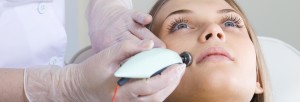Androgens affect several functions of the human skin, such as sebaceous gland growth and differentiation, hair growth, epidermal barrier homeostasis and wound healing. The major circulating androgens, dehydroepiandrosterone sulfate and androstenedione, are predominantly produced in the adrenal glands, and testosterone and 5a-dihydrotestosterone are mainly synthesized in the gonads. Testosterone in women and 5a-dihydrotestosterone in both genders are also synthesized in the skin.
Skin cells express all androgen metabolizing enzymes required for the independent cutaneous synthesis of androgens and the development of hyperandrogenism-associated conditions and diseases, such as and androgenetic alopecia.
Similar to the classical steroidogenic organs, such as the gonads and adrenal glands, the skin and its appendages, hair follicles, sebaceous glands and eccrine ⁄apocrine glands are armed with all the necessary enzymes and receptors required for independent androgen synthesis, metabolism and function. Steroid sulfatase, type 1 3b-HSD, type 3 and 5 17b-HSD and type 1 5a-reductase are the major steroidogenic enzymes responsible for the formation of potent androgens, whilst type 2 17b-HSD, 3a-HSD and aromatase inactivate excess androgens in order to achieve androgen homeostasis. Changes in isoenzyme and AR levels may have important implications in the development of hyperandrogenism and the associated skin diseases. Rapid pharmacological advancement in this field and the design of other specific potent antagonists may provide better control or even prevention of acne, hirsutism and androgenetic alopecia in the near future. Moreover, PPAR ligands and inhibitors could potentiate, in combination with anti-androgens, their effect in acne. Skin aging and wound healing may represent additional interesting therapeutic targets of anti-androgenic therapy.

